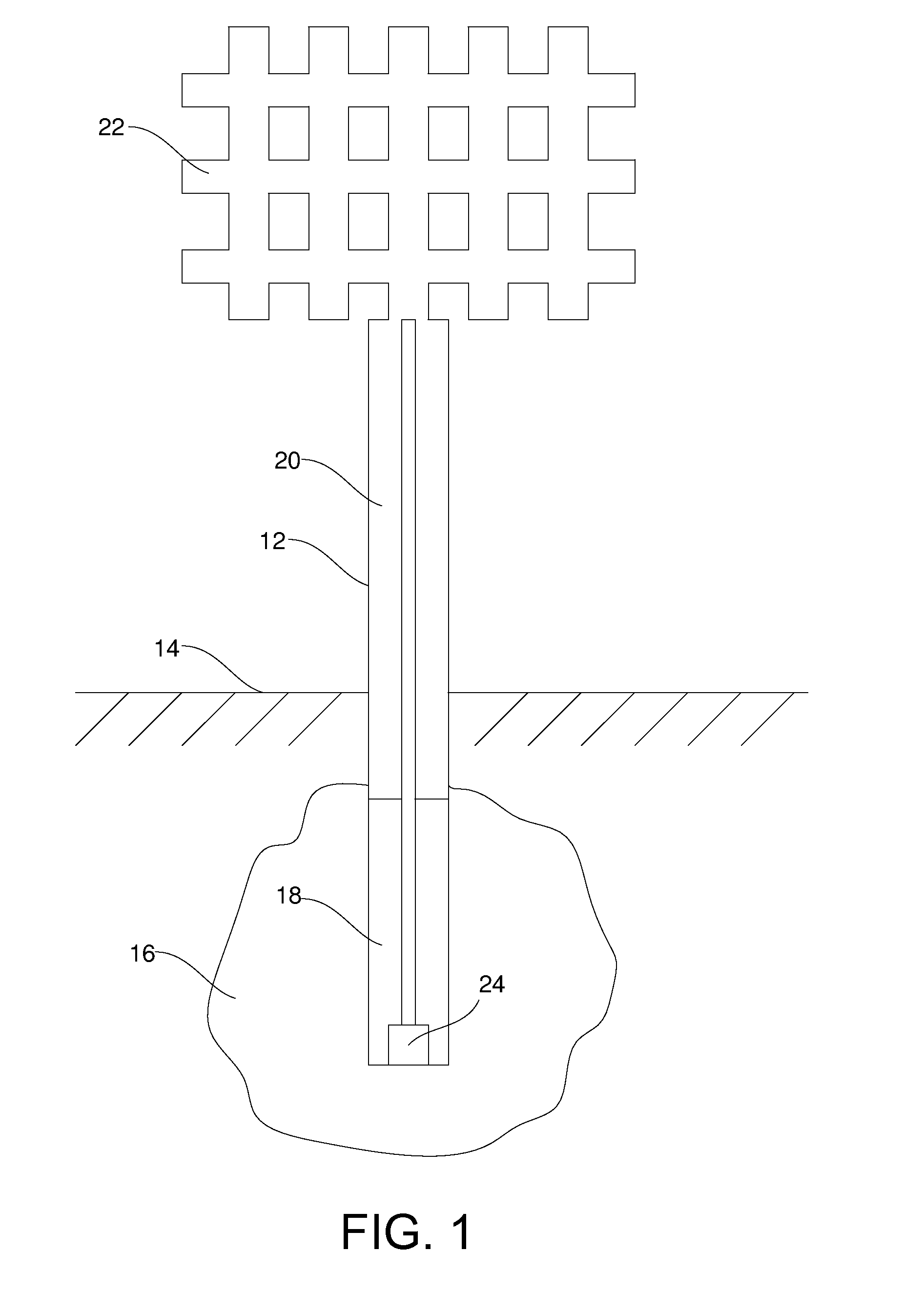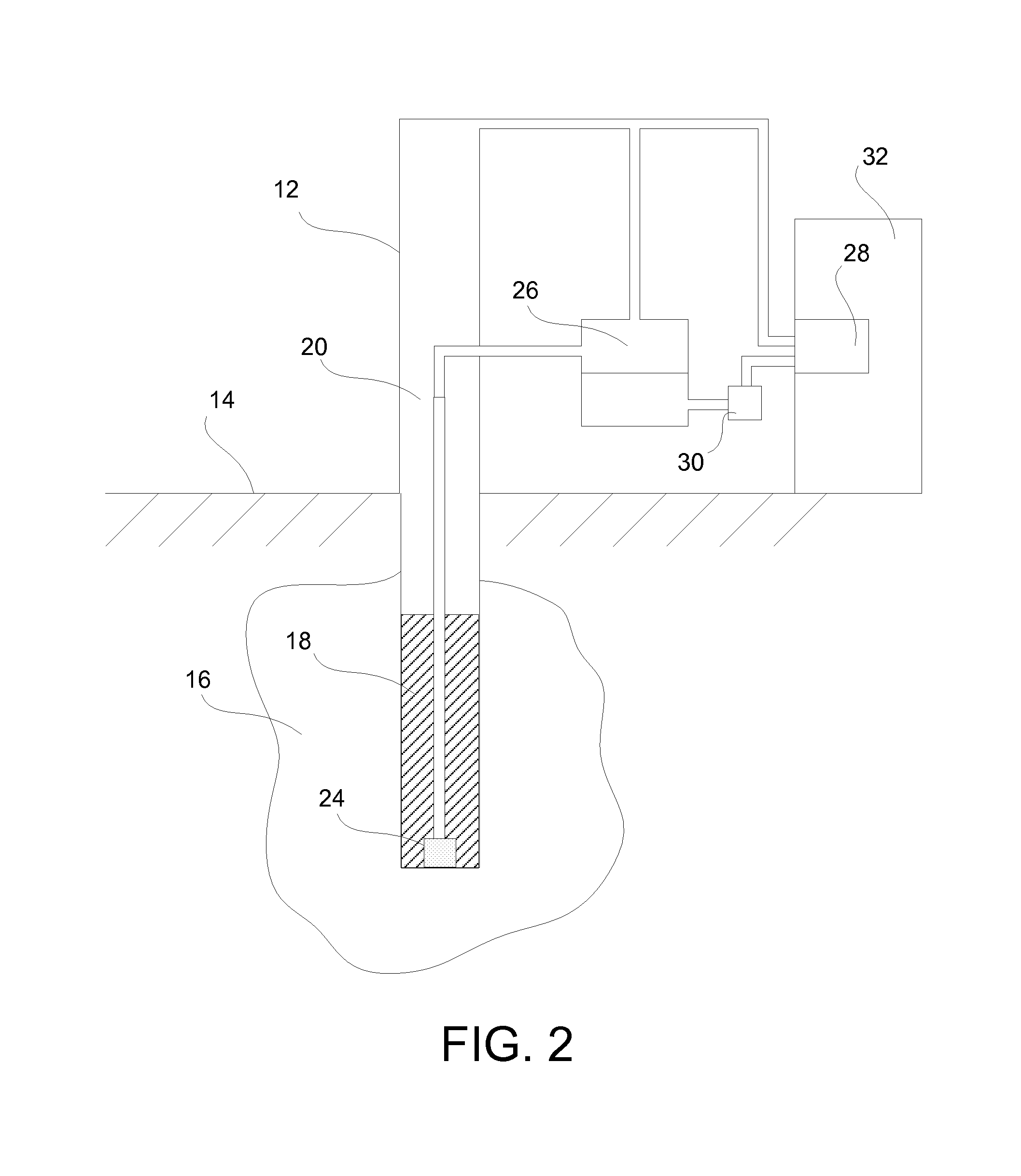Ground-Coupled Heat Exchange for Heating and Air Conditioning Applications
a heat exchange and ground-coupled technology, applied in the field of ground-coupled thermosiphons, can solve the problems of high energy consumption, frequent energy intensive and cost prohibitive, and the system can cost on the order of thousands of dollars for residential systems, and even more for commercial spaces, and achieve the effect of cost saving and minimal energy requirements
- Summary
- Abstract
- Description
- Claims
- Application Information
AI Technical Summary
Benefits of technology
Problems solved by technology
Method used
Image
Examples
example 1
Heat Load Calculation for a Typical Residential House in Utah
[0053]The available solar energy in Utah is about 1670 kW-hr / m2 / year. Such solar energy at a 70% solar collector efficiency would be about 1169 kWh / m2 / year or 4.2 GJ / m2 / year. The solar energy was calculated using a solar constant 1.370 kW / m2, annual average of 4.6 kWh / m2 / day, monthly average (min in December) of 1.7 kWh / m2 / day, and monthly average (max in June) of 7.4 kWh / m2 / day.
[0054]The following tables represent heating and cooling load calculations based on Salt Lake City, Utah data.
TABLE 1Heating and Cooling Load Calculation -Ground-Source Heat Pump ProjectEstimateSite ConditionsNearest location for weather dataSalt LakeCity, UTHeating design temperature° C.−11.5Cooling design temperature° C.35.1Average summer daily temperature range° C.15.0Cooling humidity level—MediumLatitude of project location° N40.8Mean earth temperature° C.12.0Annual earth temperature amplitude° C.15.0Depth of measurement of earth temperaturem3....
example 2
Thermal Energy Storage Dimensions for One Family House (Simplified Calculation)
[0056]Energy recovery efficiency for underground thermal energy storage can be calculated using the dimensions of a soil cylinder holding annual energy load of a typical one family residential house (150 m2×2 floors+basement). This calculation uses the energy calculations from Example 1 (QCooling=82×109 J, QHeating=29×109 J) and assumes the following characteristics of the soil cylinder: ηE=0.60, ΔT=15° C., H=10 m, ρcp≈2×106 J / m3° C. (damp soil). Using the following equation:
Qout=ηEQin=ηEHπR2ρcpΔT
the results estimate the RCooling at about 9.3 m and the RHeating at about 7.2 m. The present calculation shows the feasibility of the structures described herein. Of course, the final dimensions would depend on the specific soil, environment, and heating / cooling demands needed.
example 3
[0057]As an example, the performance of a set of 7 thermosiphons for freezing soils and the use of frozen soil as an air conditioning heat sink was assessed using a two-dimensional model discussed below. A preliminary model of freezing and thawing of water-saturated soil was created using the commercially available software package COMSOL Multiphysics 3.3. The geometry chosen for the analysis was an array of six thermosiphons placed at the corners of a symmetrical hexagon with a seventh thermosiphon placed at the center of the hexagon. Utilizing the symmetry of the system, a quarter circle with a 5-meter radius was chosen as the domain of interest. Three thermosiphons were modeled in this domain: one positioned centrally and the other two placed 60 degrees apart with one of them on the axis of symmetry. The spacing between thermosiphons was 1.5 meters. Only conduction was modeled in this basic rendition.
[0058]An ambient temperature model was used for the external temperatures. This ...
PUM
 Login to View More
Login to View More Abstract
Description
Claims
Application Information
 Login to View More
Login to View More - R&D
- Intellectual Property
- Life Sciences
- Materials
- Tech Scout
- Unparalleled Data Quality
- Higher Quality Content
- 60% Fewer Hallucinations
Browse by: Latest US Patents, China's latest patents, Technical Efficacy Thesaurus, Application Domain, Technology Topic, Popular Technical Reports.
© 2025 PatSnap. All rights reserved.Legal|Privacy policy|Modern Slavery Act Transparency Statement|Sitemap|About US| Contact US: help@patsnap.com



